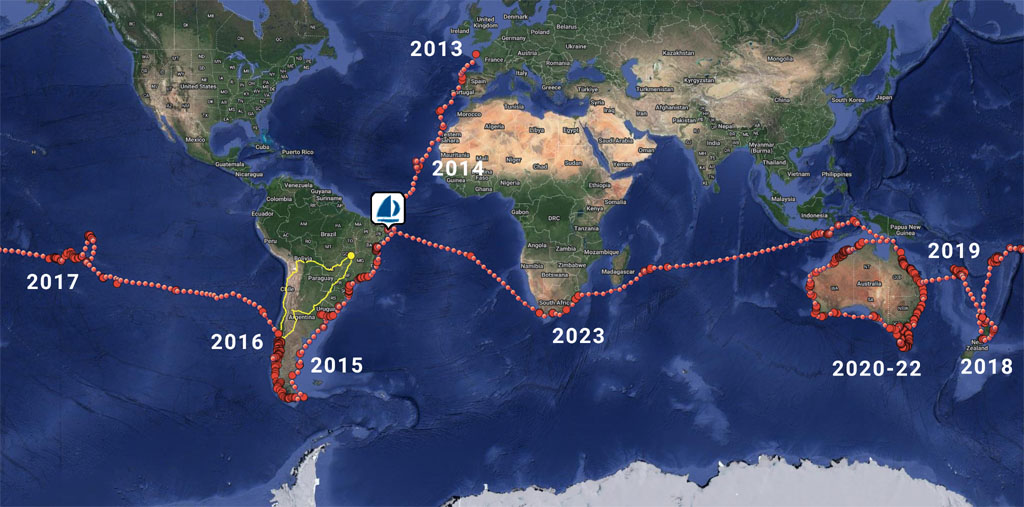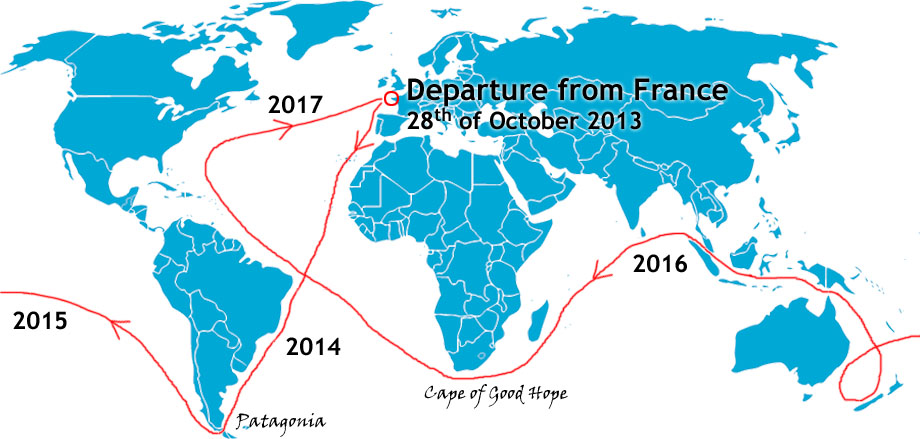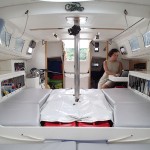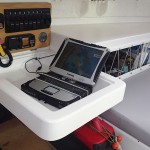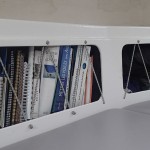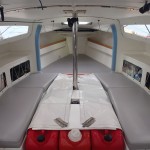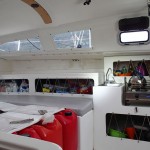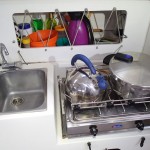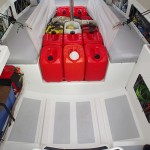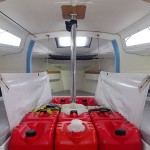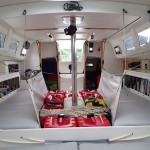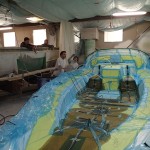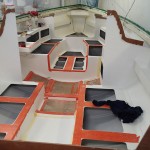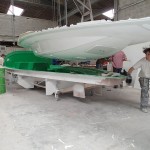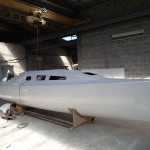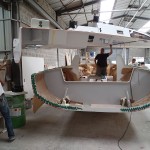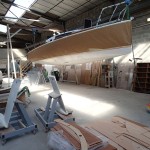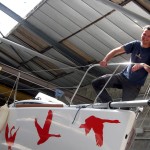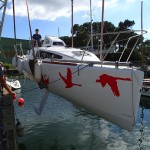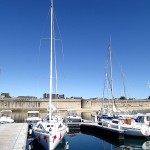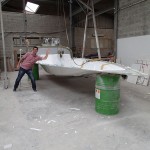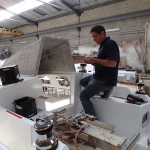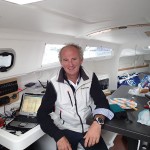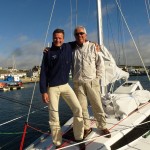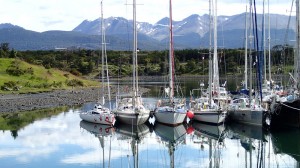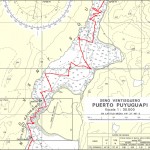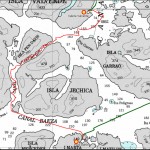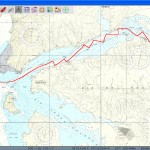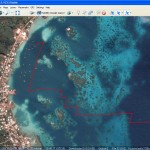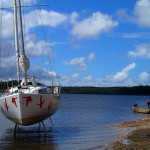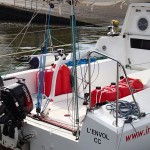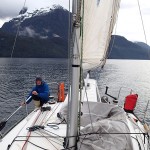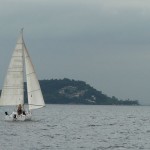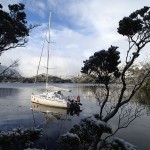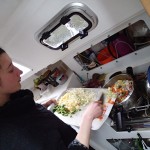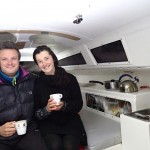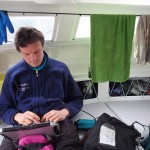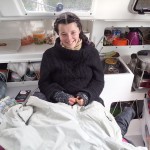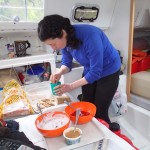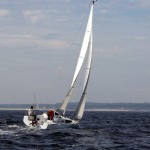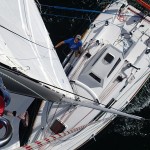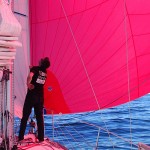Into the Wind
Into the Wind started out as a project to sail around the world on a 25 foot Django 770, which is a contemporary design sailing boat called L’Envol, in first four, then five, then six years.
Now the only thing I can say is that the voyage began on the 28th of October 2013 in Concarneau, France and that it became my life. Nonetheless the original plan looked like this:
The simplicity as a value
My profession of mountain guide taught me that light weight betters the speed which in turn optimises the safety of an expedition. On a small size sailing boat the guiding principle of less is more makes creature comforts give way to performance. What I wanted was not a house on water but a base camp and more than this – a boat that sails well. When considering all the options at the ship builder I was on a quest to keep L’Envol as simple as possible.
These did not come aboard
Inboard motor, alternator, wind generator, windlass, radar, BLU radio, chartplotter, table, fridge, oven, WC, hot water, shower, watermaker, heater, bathing ladder, dinghy motor…
And this is what remained
There is no table, the gasoline tanks, empty after the Patagonian channels, form a mezzanine. The lee-cloths are rigged when sailing windward.
Why a new boat?
I lacked experience and did not see myself remodelling a second hand boat. I feared getting stuck with an unfinished project but wished to leave as soon as possible. That is why getting involved with the ship builder appealed to me, permitting me to learn from professionals in addition. And this was the deal with Serge Calvez, the boss of Marée Haute and author of Django 770 building concept: every day from May to August 2013 together with other workers I would be hands on at the shipyard not just finding out about the construction technologies and the anatomy of my future sailboat but also making decisions.
Loic Blanchard, Selden’s commercial director in France, I met at the 2012 Paris Boat Show, became my mentor on rigging; Navicom, through Xavier Dhennin, opened for me their catalogue with reduced prices; Laurent Thilleau became my consultant for sails at North Sails answering with patience all my questions.
Why such a small boat?
A small boat rhymes with small problems – if anything gets broken, the price will be exponential to the size of the boat.
Another argument is manoeuvrability which on a smaller and lighter vessel is always better – I can sail even with light winds, go up the rivers of Camamu in Brazil or tack the port entry channels of Rio Grande, Brazil or Valdivia, Chile.
One more bonus is that instead of having a heavy, expensive and complex inboard motor, I can get by with two outboards. The draft of my twin-keeler is only 1,2 meters which adds to the sailing possibilities in shallower waters and allows me to beach her on low tide to clean the hull.
The living space on a little boat can often be a weakness, considering that in a circumnavigation at least 70% of time the boat stays put and becomes a home while only 30% at best is spent sailing from place to place. No complaints about the design of L’Envol – her 3 meter beam makes the interior as spacious and her waterline as long as many a 9 meter yacht’s of older make.
A home
The downside of having a small offshore boat go beyond her normal sailing grounds is that she’ll be less seaworthy in strong conditions and less seakindly on lumpy sea than a heavier boat. I have to watch the weather carefully before every navigation, which although easy with modern technology, is only accurate for up to three day periods. When a storm does occur, she’ll heave to sooner than a bigger boat and be very vulnerable facing breaking seas.
Another challenge making a circumnavigation on a little boat is that she’ll always be too heavy. The load of things, all neccessary to make a long voyage, sums up to an important porcentage of the vessel’s own weight. This slows her down and affects the overall performance. So the question, what could I do without, is constantly on my mind.
As years go by and sea miles get added to the distance, I realise that Into the Wind is not a project limited in time, but a lifestyle that together with Carina I have discovered upon the guiding thread of wind and water. Leaving the «system» has made us nomads. Perhaps, without knowing it, we seek another place to belong to or maybe the world is just too vast to stop anywhere.
Read more:
Values Statement
Map of the Voyage
